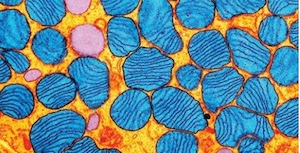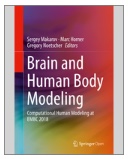An Introduction to the Bioenergetic Basis of Life
The fundamental principle of Western medical science has been that the basis of life is biological and the combination of biochemistry and molecular biology defines living organisms. However, each cell in the body can generate and receive different forms of energy -- heat, light, sound, vibration, magnetism, and electricity11, 12, 13, 14. Historically, these different types of bioenergy phenomena have been treated as byproducts of normal cellular function instead of being recognized as intrinsic to the function.
"Not only is every cell in the body a transmitter and receiver of electromagnetic information, it is these electromagnetic frequencies that precede and correspond to biological functions." Appendix C: Healing with Electomedicine and Sound Therapies in The Rife Handbook of Frequency Therapy and Holistic Health.
Emerging fields of research including epigenetics, psychoneuroimmunology (see Epigenetics and Psychoneuroimmunology), biophysics, (including biophotonics and quantum biology), proteomics, biomedical imaging, bioengineering, metabolomics, morphogenetics, and frequency therapy (see Energy Based Medical Technologies and Therapies) are proving that energy is just as fundamental to life as biology. This should come as no surprise because in 1905 Einstein published his Special Theory of Relativity demonstrating the equivalence of mass and energy (E=mc2). This fundamental equivalence confirms the fact that human beings are simulataneously biological and energetic.
What explains the coordinated function of the estimated 75-100 trillion cells and over 100,000 reactions per second in most cells in the body, day after day, and year after year? Although DNA holds instructions for creating all of the roughly 70,000 proteins in the human genome, it is still just a parts list. Proteins that are involved in metabolism and body function are created and then can be reused many times without transcription being required from DNA. When a protein wears out or is damaged and must be replaced or extra demands are placed on the body, then DNA is accessed to create information in the form of a biomolecular program to create a new copy of a protein.
"Specific frequencies and patterns of electromagnetic radiation regulate and control gene regulation, cell division, cell differentiation, morphogenesis (the process by which cells assemble into organs and tissues), hormone secretion, nerve growth and function....Though these research studies have been published in some of the most respected mainstream biomedical journals, their revolutionary findings have not been incorporated into the medical school curriculum." Dr. Bruce Lipton: Biology of Belief.
Epigenetics research has demonstrated how proteins are turned on and off by environmental bioenergetic signals, such as those generated by thoughts, emotions, and the practice of Qigong (see Qigong and Gene Expression). Although epigenetics affects cellular function and modulates the expression of genes, it is only one factor in the production and regulation of metabolic enzymes. Just as computers need oscillators to regulate the rate at which computations take place, the human body also needs oscillators and signaling mechanisms to coordinate body functions and regulate metabolism over time. The heart and brain are examples of oscillators that generate measurable electromagnetic fields 11. Researchers are beginning to understand that the complexity and timing of the regulation of body function is simply beyond chemical signal processing speeds and capabilities 8.
"Brain cells use electrical pulses to talk with one another and guide functions ranging from heart rate and breathing to decision-making and navigation. Like the din of a crowd, the chatter of 100 billion neuronal cells in the human brain creates larger patterns of activity commonly called brain waves. The pulsing of a single neuron can switch a brain’s waves from the equivalent of a big ocean swell to ripples on a pond." Breaking the Waves: A Single Neuron Can Change the Activity of the Whole Brain.
This has not always been the case. Up until recently, the majority of biology research has been based on classical physics. But many researchers point out that the primary shortcoming of classical physics based molecular biology is that the holistic character of the physical world now recognized in quantum theory is not taken into account. For example, classical physics is inadequate for describing homeodynamics, ontogenesis, and morphology. In addition, fundamental biological processes that involve the conversion of energy into forms that are usable for chemical transformations are quantum mechanical in nature. These processes involve chemical reactions themselves, light absorption, formation of excited electronic states, transfer of excitation energy, transfer of electrons and protons, etc10. Molecular biology and biochemistry, though well grounded in empirical knowledge, have had no foundation in the principles of quantum theory1. Biophysics must be based on more than classical physics in order to be able describe energy-based phenomena within cells such as quantum coherence and oscillating electromagnetic fields. Today, the field view of the organism and its interactions is finding increasing acceptance in biology, biophysics, and medicine1. Quantum biology is an example of a new discipline which incorporates field theory and combines principles of biophysics and molecular biology based on quantum physics. It's interesting to note that some emerging sub-fields of bioenergy research are so new that their scientific descriptions are still being defined (e.g. biophotonics, quantum biology, and quantum chemistry).
Understanding the interaction between human energy and human biology is intrinsic to the scientific understanding of the basis of Qigong. At a basic level, all life depends on molecules interacting through vibrating or oscillating energy fields. Each electron, atom, chemical bond, molecule, cell, tissue, organ, strand of DNA, and the body as a whole has its own vibratory character11, 14. A growing amount of energy field-based biophysics research is confirming the energetic nature of the human body. The heart, brain, and nervous system generate electromagnetic fields11. Electromagnetic fields have been found to modulate cellular signaling molecules2. Microtubules in cells generate oscillating electromagnetic fields which are believed to have an organizing affect upon water around microtubules and a role in cytoskeleton organization, cellular interactions, and information transfer 3, 6. Bioelectric ion flows and gradients have been found to regulate cell proliferation, migration, and differentiation as well as appendage regeneration, embryogenesis, and formation of prepatterns for gene expression during craniofacial patterning4. Cancer cells have been detected by their electromagnetic signatures5, and their growth has been inhibited by specific electromagnetic frequencies7. Even the stomach generates measurable electric and magnetic fields9.
1.Bischof, M., Field Concepts and the Emergence of a Holistic Biophysics. International Institute of Biophysics, Published in: Beloussov, L.V., Popp, F.A., Voeikov, V.L., and Van Wijk, R., (eds.): Biophotonics and Coherent Systems. Moscow University Press, Moscow 2000, pp.1-25.
2. Pilla A, Fitzsimmons R, Muehsam D, Wu J, Rohde C, Casper D. Electromagnetic fields as first messenger in biological signaling: Application to calmodulin-dependent signaling in tissue repair, Biochim Biophys Acta. 2011.
3. Havelka D, Cifra M, Kucera O, Pokorny J, Vrba J., High-frequency electric field and radiation characteristics of cellular microtubule network, J Theor Biol., 2011.
4. Levin, M., Molecular bioelectricity in developmental biology: New tools and recent discoveries: Control of cell behavior and pattern formation by transmembrane potential gradients, Bioessays, 2012.
5. Pokorny, J., Vedruccio, C., Cifra, M., Kucera, O., Cancer physics: Diagnostics based on damped cellular elasto-electrical vibrations in microtubules, European Biophysics Journal, 2011.
6. Pokorny, J., Video: Microtubules - Electric Oscillating Structures in Living Cells (Google Workshop on Quantum Biology). 2010.
7. Zimmerman JW, Pennison MJ, Brezovich I, Yi N, Yang CT, Ramaker R, Absher D, Myers RM, Kuster N, Costa FP, Barbault A, Pasche B., Cancer cell proliferation is inhibited by specific modulation frequencies, Br J Cancer. 2011 Dec 1.
8. Georgiev, D., Bose-Einstein condensation of tunnelling photons in the brain cortex as a mechanism of conscious action, [Preprint], 2004.
9. Kim, et. al., Influence of body parameters on gastric bioelectric and biomagnetic fields in a realistic volume conductor, Physiol Meas. 2012 Mar 14.
10. Theoretical and Computational Biophysics Group, Quantum Biology, http://www.ks.uiuc.edu/Research/quantum_biology/.
11. Oschman, J., Energy Medicine: The Scientific Basis, Churchill Livingstone, 2000.
12. Salari, et. al., The Physical Mechanism for Retinal Discrete Dark Noise: Thermal Activation or Cellular Ultraweak Photon Emission?. PLoS One. 2016 Mar 7;11(3):e0148336. doi: 10.1371/journal.pone.0148336.
13. Tuszynski. The Bioelectric Circuitry of the Cell. Chapter 11 in Brain and Human Body Modeling: Computational Human Modeling at EMBC 2018 [Internet]. [PubMed]
14. Facchin, et. al. Physical energies to the rescue of damaged tissues. World J Stem Cells. 2019 June 26;11(6):297-321. [Pubmed].




 Role of mitochondria in carcinogenesis. Tokarz, Blasiak. 2014. Mitochondria play the central role in supplying cells with ATP and are also the major source of reactive oxygen species (ROS) - molecules of both regulatory and destructive nature. Dysfunction of mitochondrial metabolism and/or morphology have been frequently reported in human cancers. Mitochondria with damaged DNA may alter signaling of the mitochondrial apoptosis pathway promoting cancer cell survival and conferring resistance to anticancer drugs [
Role of mitochondria in carcinogenesis. Tokarz, Blasiak. 2014. Mitochondria play the central role in supplying cells with ATP and are also the major source of reactive oxygen species (ROS) - molecules of both regulatory and destructive nature. Dysfunction of mitochondrial metabolism and/or morphology have been frequently reported in human cancers. Mitochondria with damaged DNA may alter signaling of the mitochondrial apoptosis pathway promoting cancer cell survival and conferring resistance to anticancer drugs [



 Biofield Physiology: A Framework for an Emerging Discipline
Biofield Physiology: A Framework for an Emerging Discipline

